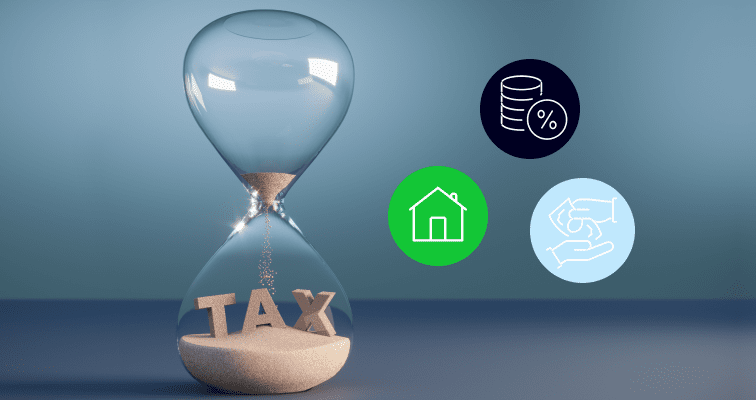In Norway, every time you sell assets such as shares, there is the possibility that you will need to pay capital gains tax (CGT) on any profits you make. Find out what CGT is, how it works, and what you need to know and do as an investor.
Investing is becoming increasingly popular as increasing numbers of people aim to achieve financial freedom, and the process is made more straightforward by online trading platforms that provide a user-friendly way of depositing funds with a trusted broker and gaining exposure to the financial markets. Selling those investments, however, is not always so straightforward.
In Norway, if you buy capital assets and then sell them at a higher price, the difference between revenue and expenditure is termed a “capital gain.” In many cases, the Norwegian tax administration (Skatteetaten) will require you to pay capital gains tax (CGT) on this capital gain.
This guide can help you to navigate the Norwegian tax environment, and prepare you for what happens when you liquidate capital assets. Once you understand how CGT works and how to calculate and report it, you might also realise that there are ways to minimise the amount you pay.
What is capital gains tax (CGT)?

Capital gains tax is a levy incurred on returns from the sale of investments such as shares, real estate or crypto. When you sell an asset where CGT is applicable, a CGT event will occur. When a CGT event is triggered, you are liable to pay tax.
In Norway, a flat CGT rate of 22% applies to many popular asset groups, including stocks.
Tip: If you are selling assets other than stocks, you should take the time to ensure that your tax return is accurate.
However, capital gains on some assets are taxed differently from the 22% flat rate. An extensive list of exceptions to the 22% flat-rate rule exists, including:
- Commercial property investments, cabins and rental properties: these may be taxed as business income at 50.6%.
- Capital gains on dividends: these have an effective tax rate of 37.84%.
The amount of CGT you pay will be determined by national tax rates as well as your personal circumstances. Not all capital assets fall within the scope of CGT in Norway, however, and the tax rate applied to different instruments varies.
It is your obligation to understand how capital gains tax works in Norway. Failing to report accurately or on time may result in you facing fines or penalties. Therefore, for active traders who buy and sell assets frequently, for new investors, or even for those with an established but diversified portfolio, it may be wise to seek advice from an experienced tax advisor. They can ensure that you do not overlook any CGT liabilities or optimisation opportunities.
Developing a better understanding of how CGT works in Norway can help you to be confident that you are being compliant, and you might also discover opportunities to reduce your overall tax burden.
What assets are subject to capital gains tax (CGT)?
To assess your CGT burden, first establish which of your investments fall into the scope of CGT in Norway. Ensure that you check the specific taxation rate applicable, as these can vary across different asset groups.
While not an exhaustive list, investors in Norway will usually have to pay capital gains tax on profits made from the following assets:
- Shares, units and similar investments
- CFDs and derivatives
- Corporate bonds
- Mutual funds
- Real estate and real estate funds
- Interest on savings
- Dividends
- Cryptoassets
- Currency trades
- Rental income
- Income from foreign investments. You must declare all foreign income and wealth in your tax return. Even if you leave Norway to live in another country, you may remain liable to pay CGT, and at the higher rate of 37.84%. If the country you move to has a double taxation agreement (DTA) with the Norwegian authorities, you may avoid paying tax twice.
Conversely, CGT-exempt assets in Norway may include:
- Private pensions
- Your main residence and holiday home – if certain conditions are met
- Personal possessions
Usually, the payment and processing of your CGT liability will be done automatically by your broker, who will “withhold” your CGT obligation, and pay it directly to the Norwegian tax administration. In some situations, however, you may need to file a tax return yourself, and pay the Skatteetaten independently.
It is beneficial, therefore, to keep track of when you sell assets, and consider those transactions in relation to the Norwegian tax year, which runs from January 1 to December 31. The processing and payment of tax must be completed by April 30 of the following year.
For instance, selling shares of Yara International stock in June, and generating a profit of NOK1,000, will incur a tax liability of NOK220. This needs to be paid by April the following year (at the very latest).
Tip: Consider contacting the Skatteetaten directly to get free advice, or to discuss your individual CGT situation.
How do I calculate my CGT?

Capital gains tax can be complicated — especially if you are an active investor or have a portfolio holding a wide range of asset types.
The core factors to consider when calculating CGT in Norway are, firstly, that the CGT rate is usually determined by the 22% flat-rate system, and secondly, if you’re investing mainly in stocks, your tax may be withheld by your broker and paid at source.
If you want to calculate your CGT obligations yourself, there are five key stages to work through:
- Calculate your basis: The capital you spent to purchase an asset minus any commissions or fees you paid on the purchase.
- Calculate your realised capital gain: The capital you received when you sold the asset, minus any transaction fees and commissions. If you were actively trading in a particular instrument, use the average purchase and sale prices.
- Determine the difference: Subtract the realised amount from the basis to establish if you have made a capital gain or a capital loss.
- Keep track of the deadlines for filing returns and paying the Skatteetaten: The tax year runs from January to December. The deadline to submit your tax filing is April 30 of the following year.
- Access your online account with the tax authority: Your tax return form will very likely already be populated with data, which has been reported directly to the tax authority by your broker. If information is missing or incorrect, you must change it in the tax return yourself. Once updated and correct, you will need to submit it.
Tip: If you don’t change and “submit” your tax return, the tax authority will consider that you approved the original report.
How does CGT impact my other investments?
The main way that CGT will impact your investments is that the net gain, after tax, will be lower than that which you recorded in the market. Therefore, due to CGT, investors will need to spend time running a full cost-benefit analysis that considers their overall investment aims.
This could encourage tax-efficient investment by adapting your strategy to slow down or speed up the sale of capital assets. The flat-rate CGT level of 22% is set by the Norwegian government, and could change at a future date. Monitoring news channels for any indication of this happening could influence your decision on when to sell.
Regardless of the capital transaction in which you engage, you will need to keep effective records of all transactions. Information worth recording includes:
- Details of share dealing transactions
- Details of transaction fees and commissions
- Property transaction details
- Accounting and legal costs
- Valuations, especially of illiquid assets
How can I minimise my CGT burden?

While you may not be able to avoid paying capital gains tax entirely, strategies do exist to minimise the amount you pay:
- Take advantage of capital losses: Capital losses can be netted off against returns from successful trades to reduce your overall CGT burden. There are certain conditions that need to be met, but if you meet the criteria, you can even roll losses over to future years.
- Speak to a professional: A tax agent with experience of helping investment clients will be in a good position to offer advice on potential ways of reducing your CGT liability. Expert advice can also help you to be more confident that your tax-efficiency campaign optimises returns, but does not result in you being non-compliant.
Final thoughts
Capital gains tax is an unavoidable part of being an investor, and calculating CGT can sometimes be challenging. The flat-fee approach adopted by Norway, and the neat functionality of the Norway tax administration website, mean that the processing of tax filings and payments can be fully automated for some individuals. However, investors with a wider range of assets may have to make changes to their tax filing before submitting it.
Whichever situation relates to you, it is important to remember that you are ultimately responsible for accurate reporting and payments relating to CGT. Gaining a better understanding of the process is important, and once done, you can concentrate on the task of booking winning trades. CGT is, after all, only charged on profitable trades.
Join eToro today and learn more about CGT, investing in shares and trading in general.
FAQs
- What is the best way to find out if I owe CGT?
-
The broker or bank that holds your investments will be set up to provide detailed reports on your transactions over the course of a tax year. You can also expect them to report those details and your CGT liability to the Norway tax administration. You will still need to log onto the administration website and check that your tax return is correct. This is when you will also be able to make any amendments — for example, the netting off of losses against gains.
- Is there a “wealth tax” in Norway?
-
Yes, there are wealth taxes at both the state and municipal level. They are targeted at high-net-worth individuals, so most investors will not fall into the scope of this tax. However, those with a total net worth in excess of NOK1.7m could face an annual wealth tax bill of up to 1.1%.
- Who makes the payment of CGT to the tax authority?
-
This depends on the type of assets in which you are investing. Unless you are investing with a local broker, there is the possibility that other CGT events, such as the sale of real estate, may not be processed automatically. You are, therefore, responsible for ensuring that all CGT reporting and payments are correct and up to date.
This information is for educational purposes only and should not be taken as investment advice, personal recommendation, or an offer of, or solicitation to, buy or sell any financial instruments.
This material has been prepared without regard to any particular investment objectives or financial situation and has not been prepared in accordance with the legal and regulatory requirements to promote independent research. Not all of the financial instruments and services referred to are offered by eToro and any references to past performance of a financial instrument, index, or a packaged investment product are not, and should not be taken as, a reliable indicator of future results.
eToro makes no representation and assumes no liability as to the accuracy or completeness of the content of this guide. Make sure you understand the risks involved in trading before committing any capital. Never risk more than you are prepared to lose.


